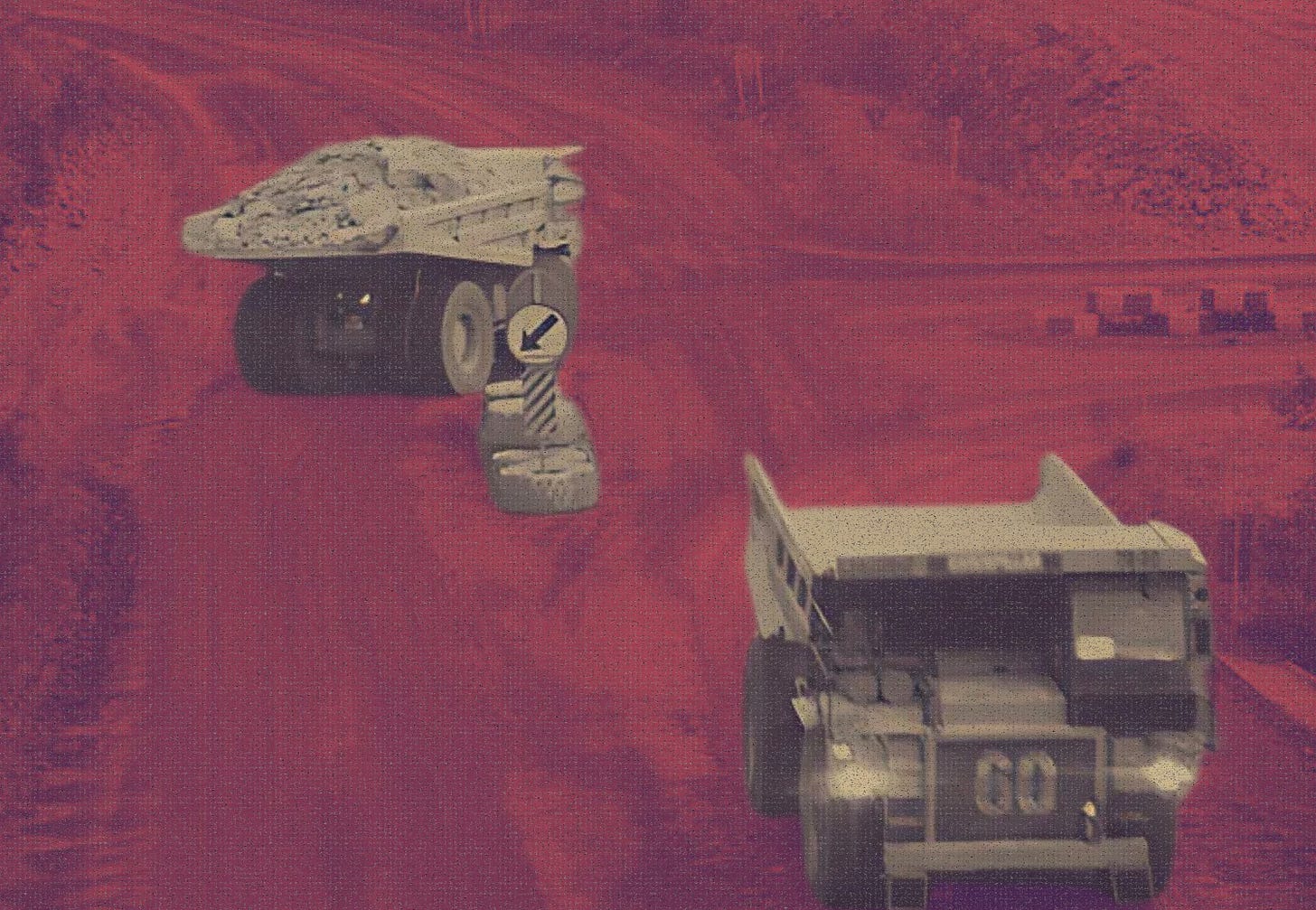With tree-covered mountains and curving rivers creating a basin-like effect around the cities of Chiang Mai, Lampang and Chiang Rai, the northwest of Thailand is one of the most scenic and beautiful places in the country.
But the mountainous region is also rich in financially valuable rare earth minerals, and mining operations are taking more and more of an interest, tearing up the land as they go.
The effects of mining can be seen throughout the region. About a 40-minute drive to the east of Lampang city lies the Mae Moh Mine, an open-pit lignite (a type of coal) mine which began operations in the 1950s. It’s not just the biggest mining site in Thailand, but the largest in all of Southeast Asia. Predictably, the environmental costs have been severe.
“In [the materials released into the atmosphere] there’s toxic gas, there’s heavy metal contamination, and coal is the source of this heavy metal contamination, which is toxic to human health,” says Wora Suk, the Mekong Campaign Director for the environmental and indigenous rights organisation, EarthRights International.
Navigating the murky waters of environmentalism in Thailand is fraught with government inaction, legal and diplomatic complexities, and the ever-looming threat of lawsuits from multi-billion dollar energy firms.
A recent case that exemplifies these issues comes from across the border in Myanmar, currently embroiled in a devastating civil war following the 2021 military coup. Since overthrowing the civilian government and seizing power, the junta has steadily lost ground and control to armed rebel groups throughout the country. The resulting governance vacuum has allowed mining operations — largely supplying Chinese processing plants — to operate with near-total impunity, since there’s a lack of official capacity or will to implement and enforce regulations.
Earlier this year, the environmental impacts of mining operations in Myanmar’s Shan State and Wa State (where centralised control is patchy in the former, and virtually non-existent in the latter) quite literally spilt across the border into Thailand. Thai officials believe that toxic waste from mining plants in Shan State have leaked into rivers running through Thailand, including the Kok River which runs through Chiang Rai, the northernmost city in Thailand (437 kilometres from the Myanmar border), before merging with the Mekong — Southeast Asia’s longest river. When the Department of Pollution Control tested the waters of the Kok, they discovered arsenic levels that were almost four times World Health Organisation limits.
The fallout from the toxic waste has caused significant pushback in Thailand. In June, around 1,500 people rallied in Chiang Rai to pressure their government to take action on the environmental damage being caused. But efforts to get accurate information from or open constructive dialogues with war-torn Myanmar have been riddled with problems — on even the most basic levels.
“We don’t know exactly who the actor is. We know how powerful they are, but we’re still trying to find out who are they exactly, what is the company name, in order to trigger their responsibilities,” says Wora.
It’s just one example of the to-ing and fro-ing between mining and energy firms and environmental action in the region.
Indigenous Rights
The environment is not the only thing affected by the surge in interest from mining and energy firms. Northern Thailand is also home to dozens of indigenous communities — around 1 million people by some estimates — many of whom have seen their traditional homelands transformed by corporations seeking to profit from the region.
“Communities who live on and are relying on natural resources […] are not part of the decision-making about that project, whether or not it’s going to happen,” says Wora. “Like suddenly there’s a project approved and then the communities are excluded from their own lands, and they don’t have a say in compensation negotiations or things like that.”
Indigenous groups in Thailand remain among the poorest in the country. According to the Minority Rights Group, a human rights organisation:
They also have much lower rates of participation in schooling, possibly linked – in addition to poorly equipped and staffed schools – to the almost complete absence of instruction in their mother-tongue in state schools.
Over the past couple of decades there’s been a renewed push to have people from the minority indigenous groups registered as Thai citizens. While around 100,000 have since become registered, estimates of between 100,000 to close to half a million remain technically stateless while living on Thai state land. Many lack access to state services such as healthcare and education, while also facing restrictions on their freedom of movement.
The Thai authorities have done little to address the issues these communities face, often implementing policies that have actively harmed them. In 2014, the government (under former army general Prayut Chan-o-cha) introduced the ‘Return Forest Policy’. Ostensibly a conservation effort, the legislation has also meant that numerous indigenous communities are now considered interlopers on state land. This has led to the confiscation of many of their traditional homelands, and the communities threatened with fines or imprisonment.
One ongoing case that has come to encapsulate the broader situation is currently unfolding in Mae La Noi, a district in the Mae Hong Son province, sandwiched between Chiang Mai and the Myanmar border. The area is home to a large, defunct fluorite mine, which has remained dormant for around 30 years. Though once devastating for the surrounding ecology — with locals falling ill and animals dying from pollutants entering the river — nature has steadily begun to recover since its closure.
But following a wave of Chinese investments in 2021, Universal Mining (a Thai company and the mine’s owner) is now looking to resume operations. Although the company has not yet secured the environmental impact assessment required for it to proceed, experts have warned that since the Royal Forest Department listed the forest as ‘degraded’, the company could be able to bypass the regulations and move ahead with mining the area again.
Fearing another ecological disaster and the possibility of displacement, the local Karen people are now fiercely resisting the mining firm’s plans, resulting in an ongoing David-vs-Goliath-type standoff.
‘This is about stopping the activism on the ground’
For this episode of Currents, I speak with Wora about the work that EarthRights is doing to protect the environment and the rights of indigenous peoples in the region — and the pushback they’ve received from mining and energy firms. One recurring issue the group has faced in recent years is the use of SLAPP (Strategic Lawsuit Against Public Participation) suits: bad faith legal cases filed by powerful organisations or entities (such as large corporations or authoritarian governments), designed to cripple grassroots action.
“This is about stopping the activism on the ground, delaying the activism on the ground,” says Wora. “I’ve seen an increased number of SLAPP suits used as a threat to the communities in the past four years […] Because the industry is growing, I think, and the communities have learned from the past projects they’ve seen from others.”
But the push to protect the environment and indigenous rights appears to be steadily gaining traction.
“There are more wins here and there,” Wora adds. “For example, the fact that we could ask for the court injunction to protect Omkoi [indigenous] communities is one of the wins and it has been three years now so we make sure the communities are safe under these court injunctions.”
In addition to our interview, you can learn more about this topic from the Minority Rights Group and the International Work Group for Indigenous Affairs (IWGIA), two human rights organisations which are focusing on protecting the rights of indigenous peoples. I’d also highly recommend reading Mongabay’s recent story on the ongoing standoff between the Karen community and Universal Mining in Mae Hong Son province, as referenced earlier in this article.












